Addiction Pain Management And Alternative Therapies
According to the Centers for Disease Control and Prevention (CDC), in 2012, healthcare providers wrote approximately 259 million prescriptions for painkillers. This startlingly amount is enough for every adult in the United States to have a bottle of pills. For decades, rehabilitation facilities have administered medications to ease the symptoms of detox and withdrawal. However, it is important to acknowledge medicine is not enough and other therapies must be integrated into treatment to ensure the most successful rehabilitation process.
When combating substance abuse, each addict is different. It is crucial that an addict’s rehabilitation treatment plan is tailored to his or her specific needs and addiction. Rehab can be an especially excruciating and painful process. In order to mitigate these side effects, many facilities promote pain management for their patients.1 Although pain management can be a necessity during the rehabilitation process, it is important to explore and incorporate other therapy and program options to establish long-term success for each individual.
The Phases Of Recovery
Addiction is a chronic disease that affects an individual’s brain, causing him or her to compulsively seek a substance despite the negative physical, psychological and/ or personal repercussions.2 When an addict decides to enter rehabilitation, a person must endure and complete a variety of stages and steps.
During the past four decades, research has continuously been gathered on the most effective treatment methods. Based upon this information, credible organizations have made recommendations on specific principles that should be implemented in order to achieve long-term sobriety. This collective research has outlined that the following standard components should be included for successful rehabilitation3:
- Detoxification
- Medication
- Behavioral Counseling
- Evaluation
- Aftercare Plan
Each phase is an integral cornerstone in the recovery process. It is important to note that detoxification is only the start of rehabilitation and further treatment is necessary. This process can be particularly painful with debilitating side effects that in extreme cases can be life threatening. Specifically when dealing with opioid addiction, detox from substances such as prescription painkillers and heroin can cause extreme pain. Some withdrawal symptoms may include4:
- Stomach Pain
- Nausea and Vomiting
- Chills
- Sweating
- Seizures
- Stroke
- Increased Blood Pressure
- Cardiovascular Problems
Due to these intense withdrawal symptoms, it has now become commonplace to use medications to suppress these effects. These drugs do not cure addiction, they merely aid with lessening the physical symptoms generated by detox and withdrawal. One study of treatment facilities found that medications were used in almost 80 percent of detoxifications.5
Many physicians also use medications to prevent relapse. Researchers have conducted studies promoting that medicine helps to decrease cravings and reprograms the brain to its “normal function.” Common medications used for these purposes include methadone, buprenorphine and naltrexone.6
Although medication plays a critical role in the beginning stages of the recovery process, integration of additional therapies are of the utmost importance to ensure a well-rounded recovery program. A broad regime of therapeutic techniques allows patients to better understand their disease and how to quell their urges to use once they have left the facility. Substance abuse treatment should address an individual’s physical, psychological and spiritual state, not just their addiction.
Treatment options that will be further explored and discussed throughout this article include:
- Activity-Based Therapies
- Holistic Therapies
- Animal-Assisted Therapies
Activity- based therapies provide an avenue for recovering addicts to express themselves through an interactive activity. Every patient responds differently to therapy, some are more comfortable in a one-on-one or group counseling session. However, it is crucial to discover the most effective type of therapy for each person. Activity-based therapies provide creative outlets for patients to express their inner thoughts and emotions in an effort to begin the healing process of their minds, bodies and spirits and to be less inhibited with their communication pathways. These treatment methods include:
- Art
- Exercise
- Horticulture
- Cooking
Art: An Activity-Based Therapy
In art therapy, addicts are able to convey their emotions, thoughts, ambitions and fears through their work.
Art therapy promotes self-expression through a wide range of artistic media forms such as painting and drawing. It is a three-way introspective process between a patient, their therapist and the art.7
Based upon a specific individual’s artwork, therapists can conclude useful information about the person’s mood and overall mental health. It aids a recovering addict to tap into their true authentic self, the strong person inside before the disease of addiction consumed their life.8
Exercise: An Activity-Based Therapy
Physical activity is an effective means of combating addiction. Fitness therapy has been held in high regards in the addiction treatment community and provides a wealth of benefits to those partaking in it. Exercise produces endorphins.
Endorphins, also known as “happy hormones,” are chemicals within an individual’s body that travel between neurons in the brain and pass along messages between them.9
They have a number of physiological functions and generate an analgesic effect, similar to the effects of abusing an illicit substance.
Endorphins block the transmission of pain signals just like opioids, but without the negative side effects.
Exercise is a long-term pain management approach. Exercise not only produces endorphins, it also relieves stress, promotes an overall wellbeing and aids individuals with rebuilding a healthy and meaningful, drug free life. Along with an improved body, exercise therapy improves the mind as well.
Horticulture: An Activity-Based Therapy
Horticulture therapy promotes wellbeing and a sense of purpose for recovering addicts. Dating back to the 19th century, Dr. Benjamin Rush was the initial individual to recognize and promote the healing properties of horticulture therapy, specifically with people struggling with mental illness disorders.10
The American Horticulture Therapy Association conveys that this specific type of therapy program has become an accepted therapeutic modality.
Along with its overall extreme benefits, horticulture therapy aids with regaining specific skills while improving memory and coordination, strengthening muscles, expanding problem solving skills and is overall extremely beneficial.
Cooking: An Activity-Based Therapy
Cooking therapy enables patients with a sense of confidence and a heightened level of independence. Therapeutic cooking provides patients with knowledge for nutritional eating and develops more honed cognitive skills. Addiction takes control of a person’s entire life.
Addicts become dependent upon a substance and lose interest in most hobbies and extracurricular activities.
Cooking therapy provides a constructive outlet to become passionate about something that will benefit them throughout their entire life.
Creating a dish and experimenting in the kitchen develops of sense of accomplishment and can be extremely time consuming, preventing a person from being tempted into partaking in any type of drugs.
David Wiss, a Registered Dietitian Nutritionist, believes that one of the most important, yet ignored, aspects to treating addiction is treating nutritional deficiencies.
Wiss states, recovering addicts tend toward highly palatable foods that can provide a temporary reprieve from negative feelings. These are almost invariably processed foods with added sugar, salt and vegetable oil fats, refined carbohydrates, and caffeine. They consume this rather than high-nutrient foods. Unfortunately, these foods destabilize blood sugar, spur inflammation, and deplete the brain of essential neurotransmitters that play a large role in stabilizing moods, which could be a trigger for relapse.11
Holistic therapies have been credited with decreasing stress, boosting individual’s immune system and increasing a person’s psychological resilience, aiding them in coping with any potential environmental triggers.12 A wide range of healing modalities that offer specific benefits related to addiction, most specifically the detoxification process, withdrawal symptoms and relapse prevention. These types of therapies promote drug-free pain management. These methods include:
- Yoga
- Acupuncture
- Animal-Assisted Therapy
- Equine Therapy
- Yoga: A Holistic Therapy
- Yoga can relieve anxiety, stress and depression.
Yoga has been practiced for thousands of years and embraces a multitude of styles and disciplines. Yoga, which means “union,” unites an person’s mind, body and spirit while melding the consciousness and unconsciousness parts of the mind.13
Yoga combines three crucial aspects: physical postures, breath work, and meditation. This type of exercise promotes a unique state of inner peace that can assist recovering addicts in preventing relapse and sustaining long-term sobriety. Many studies indicate yoga can relieve anxiety, stress and depression.14
Acupuncture: A Holistic Therapy
Originating in China, it has been practiced for over five centuries and has continuously gained support and recognition in western countries, such as the United States.15 It has been researched, tested and refined for decades now, improving its many health benefits.
A session begins with a licensed practitioner taking a general health evaluation. Once this has been completed, acupuncture needles will strategically be inserted into specific points in the body, which are determined by a person’s health condition.
The needles are a few centimeters long and are placed just deep enough to touch the muscle tissue of a patient.
They are then left in that spot for approximately 30 minutes.16
Acupuncture stimulates and increases the production of endorphins within a person’s body. Endorphins, the body’s “natural painkillers,” eliminate the necessity for prescription opioids, which can lead to addiction.
In regards to addiction treatment, research has shown that acupuncture significantly decreases substance cravings, especially when treatments occur over the course of time.17
Animal-Assisted Therapy
Animal-assisted therapies (AAT) involves the professional use of trained animals for structured, therapeutic practices. AAT advocates suggest that when addicts care for a dependent creature, that the addicted individual in recovery discovers the nurturing side of him or herself and cultivates a deeper sense of what it means to be nurtured.18
In 2009, a study, called Anthrozoos, was published by Mississippi State University and Lindsey Wilson College to assess the effectiveness of AAT with addicts and their recovery from substance abuse. Researchers concluded that this specific type of treatment is beneficial in regards to addiction and the therapeutic alliance developed between a patient and their therapist.19
In the Anthrozoos study, researchers studied a group of 231 individuals that were affected by substance abuse or addiction to gauge the impact of animal-assisted therapy on the therapeutic alliance. Participants were enrolled in residential treatment programs that used group-counseling sessions throughout the whole rehabilitation process.
Throughout 26 counseling sessions, 135 of the recovering addicted participants interacted with a trained therapy dog. The remaining 96 participants did not interact with a therapy dog. Researchers then had each participant fill out a detailed questionnaire in regards to the strength of the therapeutic alliances formed during the study.
Peggy Nepps, PsyD., explains that, “after analyzing the gathered data, the researchers found that, when compared to the study participants who did not interact with a therapy dog as part of their treatment, the participants who did interact with a therapy dog generally had a more favorable perspective on the alliances formed with their therapists. Included among the people who had an affirmative take on the impact of animal-assisted therapy were people affected by methamphetamine dependence/addiction, cannabis dependence/addiction and problems related to the simultaneous use of two or more substances.” 18
A stronger alliance with a therapist most often results with more productive results in regards to a patient’s addiction.
Equine: An Animal-Assisted Therapy
Equine therapy originally began as therapy geared towards individuals with physical disabilities.
Since its profound benefits were discovered with physically-challenged individuals, addiction therapists adopted the treatment for recovering substance abusers.20
Equine-assisted therapy aids recovering addicts with building trust and confidence, promotes patience and cultivates self-esteem.
Since their individual roles within their herds are similar to human dynamics, horses can be used to educate recovering addicts on a variety of things such as self-awareness, patience, boundaries, trust and communication.21
Conclusion
Addiction is a complex disease and depending upon the individual and their specific addiction, certain programs and treatments will be more effective. It is critical that treatment during rehabilitation addresses more than just a person’s drug abuse, it must target a patient’s whole body, mind and spirit.
Incorporating a wide range of therapeutic techniques into an addict’s rehabilitation plan is crucial for successful rehabilitation. Pain can derail an individual’s recovery. Since many people who enter rehab are struggling with substances, such as prescription painkillers, cocaine and heroin, continuing to administer pain management medicine after detox can prove to be counterproductive.
One of many conclusions that can be drawn from the above information, is that there is a wide variety of other therapies and modalities that need to be implemented into a recovering addict’s rehabilitation plan to aid them in achieving long-term sobriety.



